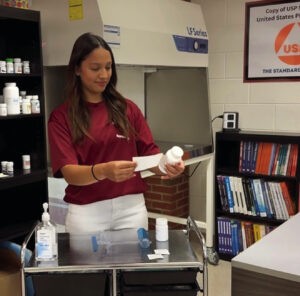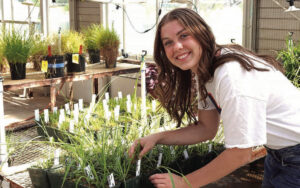Extension office shares prescribed burning safety tips
By Cole Sikes
For the Enquirer
Spring is here, and Alabama’s fields and forests will be greening up soon. This period signifies the conclusion of winter and dormant prescribed burning period.
When dealing with the beast that is fire, it is crucial to know how to stay safe regardless of the burning season.
The use of prescribed fire has proven to be one of the most beneficial tools in agriculture and forest management. In crop fields it removes debris prior to the next planting, controls weeds and reduces pests/diseases. In forestry, running fire through a forest floor allows sunlight to reach lower canopies, decreases natural competition for timber and nourishes the soil.
PREPARATION IS KEY
Proper preparation combined with defensive strategy is key when deciding to intentionally burn sections of a property. Without either of these elements, disaster could strike, leaving lives and property in the balance.
“One way to greatly reduce the risk of catastrophic wildfires is in proper preparation,” said Norm Haley, an Alabama Cooperative Extension System forestry, wildlife and natural resources regional agent. “Being able to quickly put out a small ‘jump’ in fire can make be the difference between a safe burn and catastrophe.”
PERSONAL PROTECTIVE EQUIPMENT
Having the appropriate personal protective equipment is vitally important when conducting a prescribed burn. Without these supplies, the risk and danger during a burn of any size increases tremendously. Landowners should take note of the necessary articles of PPE: eye protection, like goggles, clear glasses or sunglasses at the minimum; fire-resistant clothing; leather boots; gloves; hard hat; fire shelter
TAMING THE FLAMES
Fire cannot thrive without the existence of three components: oxygen, fuel and heat. This trio is referred to as the “fire triangle.” Without the existence of all three elements, fire will not thrive. Removal of one of these items will cause any flame to slowly burn out or disappear completely.
The term fuel refers to any material, living or not, that fire can use to spread. This can range anywhere from light, flashy fuels such as grasses or shrubs to larger materials like stumps and piled storm debris that take longer to extinguish. Of course, in dry conditions, the ignition rate for these fuels are exacerbated by the lack of moisture in the air and the material itself.
TOOLS OF THE TRADE
There are several tools for controlling fire. Fire breaks, also referred to as fire lanes, are one of the most commonly-used techniques. These paths are typically created at 6-30 feet using a bulldozer or a disk plow, depending on the surrounding fuels and reduced to bare mineral soil which prohibits fire spread. However, these barriers are not fireproof, and other forms of backup are necessary.
“Keeping a tractor with disk, hand rakes and water tanks/sprayers nearby are equally as important in fire containment,” Haley said.
METEOROLOGY MATTERS
When making a decision on when to burn, it is imperative that landowners pay attention to weather patterns.
“The difference between safely burning a pile of leaves or conducting a 50-acre prescribed burn not only has to do with the weather the day of the fire but also with conditions on the days leading up to it,” Haley said.
In windy or prolonging drought conditions, burning might be too risky and unfavorable for safety.
“Don’t be the one that mutters the phrase ‘I didn’t know it could spread that quick’ to firefighters and county sheriffs,” Haley said.
CERTIFIED PRESCRIBED BURN MANAGER
To meet the requirements of the Alabama Prescribed Burning Act, a training program was established. The Certified Prescribed Burn Manager course covers 32 hours of discussion, planning and study of Alabama fire laws.
Any individual who is interested in the use of prescribed fire as a management tool is encouraged to participate in the program.
“The course will stress the need of a proper burn plan,” said Haley, “and how important it is to have emergency contact numbers ready in case you need emergency assistance.”
Being fire aware is the name of the game when finishing prescribed burns near the end of the 2021-2022 season. Gather information and proper procedures from local fire professionals and first responders. When in doubt, or if witnessing a wildfire, dial 911.
For more information on prescribed burning and safety, visit the Alabama Cooperative Extension System website at www.aces.edu.








